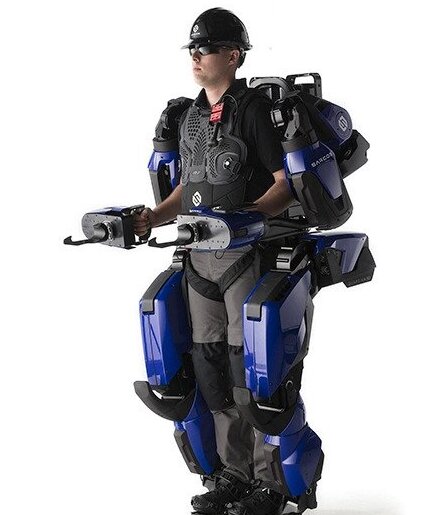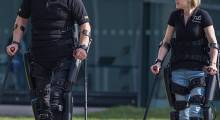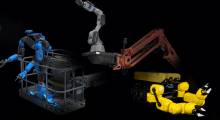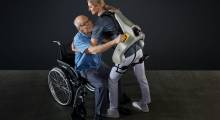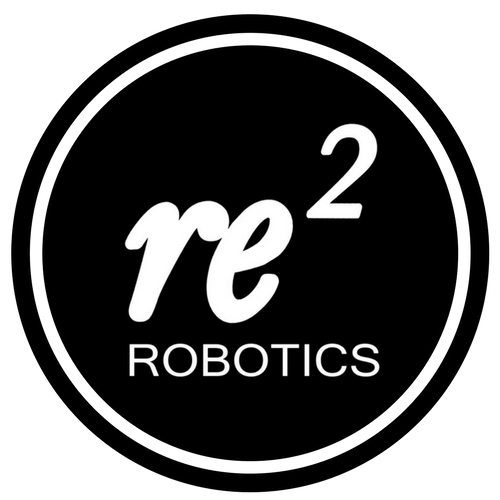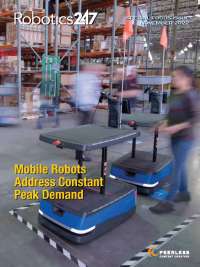Sarcos Technology and Robotics Corp. yesterday announced preliminary fourth quarter 2022 revenue of $6.1 million and full year 2022 revenue of $14.6 million, each at the high end of its guidance range. The company also announced updates to its product line.
As part of its product commercialization efforts, Sarcos has expanded its Guardian product line, adding the Guardian XM intelligent robotic system and Guardian Sea Class robotic system to its lineup, which also includes the Guardian XT™ dexterous robotic system.
Sarcos showcases benefits of RE2 purchase
The Guardian XM and Guardian Sea Class come from Sarcos’ acquisition of RE2, Inc. in April 2022, after which the company integrated RE2’s Sapien products into its portfolio. Sarcos is now commercializing its Guardian XT system, Guardian XM system (previously named the Sapien 6M), and Guardian Sea Class system (previously named the Sapien Sea Class).
“Sarcos is a pioneer in robotics and has helped shape the industry since its founding in 1983,” said Kiva Allgood, President and CEO, Sarcos, in a statement. “R&D has been our focus, and it got us where we are today. Now it’s time to leverage our $375 million R&D investment and commercialize our teleoperated robotic systems and semi-autonomous solutions for which our customer pipeline is ready.”
“We expect to fulfill near-term customer demand for our robotic systems and generate revenue through sales of our three core systems, the Guardian XT, Guardian XM, and Guardian Sea Class systems, and our market-specific robotic solutions. We are continuing to develop our Guardian XO exoskeleton.
Sarcos produces 10 Guardian XM robots in fourth quarter
Sarcos said it achieved its objective of producing 10 Guardian XM robot manipulators in the fourth quarter of 2022. The company believes that the production of Guardian XM and Guardian XT systems is on schedule and that initial commercial versions of both systems will be ready for customer delivery in the first half of 2023.
Sarcos’ facilities in Salt Lake City and Pittsburgh can produce 300 to 500 robots, depending on the mix. The company plans to expand production capacity by partnering with a contract manufacturer.
Sarcos’ robotic systems include baseline software enabling basic controls, teleoperation, and semi-autonomous capabilities. Sarcos will provide additional software options, such as supervised autonomy as an incremental service. Sarcos’ supervised autonomy framework uses multi-modal sensor data to optimally perceive, interact, and conceptualize unstructured environments.
Combined with our success-based learning AI approach, the supervised autonomy framework harnesses the power of real-time and learned-behavior data inputs that enable Sarcos’ robots to execute task-specific autonomy in unstructured environments successfully.
Its advanced, success-based AI enables human workers' flexibility, creativity, and improvisation skills to deliver improved workflow performance and safer interactions between humans and machines for jobs in unstructured environments, it said. In addition, Sarcos intends to offer its software solutions separately for sale or license.
Demand is strong, said Sarcos CFO
Drew Hamer, chief fianicial officer of Sarcos, said, “We see strong demand to purchase Sarcos’ robotic systems. We expect to sell solutions for specific markets and use cases based on our customers’ needs and applications.
“We’re also seeing customers gravitate toward purchasing access to our software as a standalone service. Given customer interest in purchasing our systems and solutions, we do not expect Robot as a Service (RaaS) to be a focus of our business model going forward. If needed in the future, we will support our customers in identifying capital providers to finance their purchases of robotic systems.
“We closed the year with $114.5 million in cash and cash equivalents, which will allow us to scale up production quickly. Additionally, our shift from a RaaS model to a direct sales model will lower our expected additional capital requirements to achieve cash flow break-even to less than $50 million,” Hamer concluded.
Article topics
Email Sign Up

